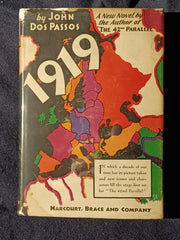Politics of Sikh Homeland by Gopal Singh
Politics of Sikh Homeland by Gopal Singh. Ajanta Publications. (1994). ISBN 10: 8120204190. 5 3/4" x 8 3/4" vi, 329 pages plus copyright and table of contents pages Hardcover with dust jacket. DUST JACKET: Heavy wear on the top of dj spine. Bumping and wear to the rest of the top dj edge. Less so on the bottom dj edge. Dj spine is sun-faded. Not price-clipped with dj price of Rs. 395. BOOK: Moderate cover edge wear. Pages very lightly tanned with effect on paper flexibility. A small gouge on the gutter inside the back cover. Previous owner or bookseller rubber stamp inside the back cover. No other previous owner markings. No tears, folds or creases to pages. Binding is tight with no looseness to pages. Not ex-library, not remaindered and not a facsimile reprint. For sale by Jon Wobber, bookseller since 1978. KJ23a
"The Khalistan movement is a separatist movement seeking to create a homeland for Sikhs by establishing an ethno-religious sovereign state called Khalistan[A] (lit. 'land of the Khalsa') in the Punjab region.[2] The proposed boundaries of Khalistan vary between different groups; some suggest the entirety of the Sikh-majority Indian state of Punjab, while larger claims include Pakistani Punjab and other parts of North India such as Chandigarh, Haryana, and Himachal Pradesh.[3]
The call for a separate Sikh state began during the 1930s, when British rule in India was nearing its end.[4] In 1940, the first explicit call for Khalistan was made in a pamphlet titled "Khalistan".[5][6] In the 1940s, a demand for a Sikh country called 'Sikhistan' arose.[7] With financial and political support from the Sikh diaspora, the movement flourished in the Indian state of Punjab – which has a Sikh-majority population – continuing through the 1970s and 1980s, and reaching its zenith in the late 1980s. The Sikh separatist leader Jagjit Singh Chohan said that during his talks with Zulfikar Ali Bhutto, the latter affirmed his support for the Khalistan movement in retaliation for the 1971 Indo-Pakistan war, which resulted in the secession of Bangladesh from Pakistan.[8]
The insurgency in Punjab started in the early 1980s after 1978 Sikh–Nirankari clash.[9][10] Several Pro-Khalistan groups were involved in the armed insurgency, including Babbar Khalsa and Khalistan Commando Force, among others.[11] In 1986, Khalistan Commando Force took responsibility for the assassination of General Arun Vaidya, in retaliation for 1984's Operation Blue Star.[12][13] By the mid-1990s, the insurgency petered out, with the last major incident being the assassination of Chief Minister Beant Singh, who was killed in a bomb blast by a member of Babbar Khalsa.[14] The movement failed to reach its objective for multiple reasons, including violent police crackdowns on separatists, factional infighting, and disillusionment from the Sikh population.[9][15]" - Wikipedia













